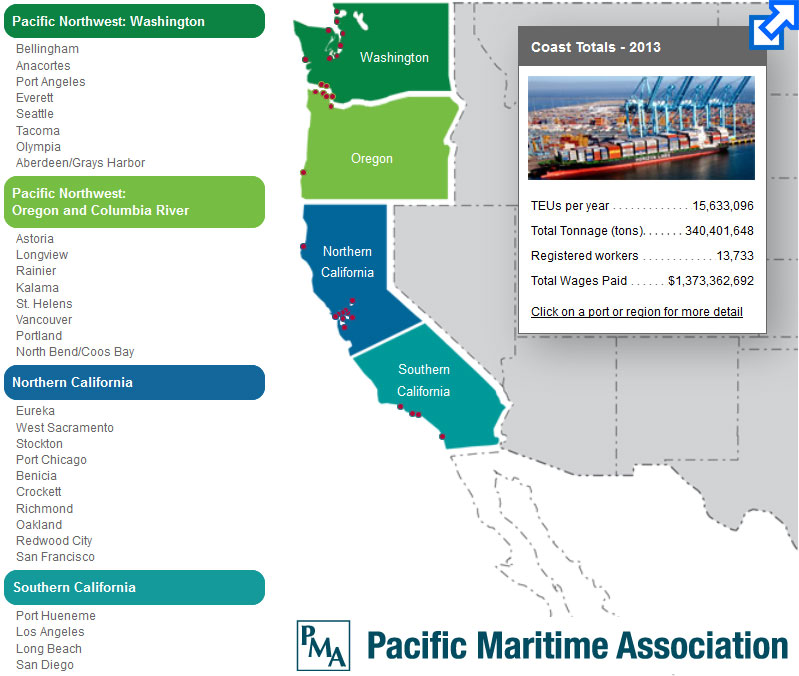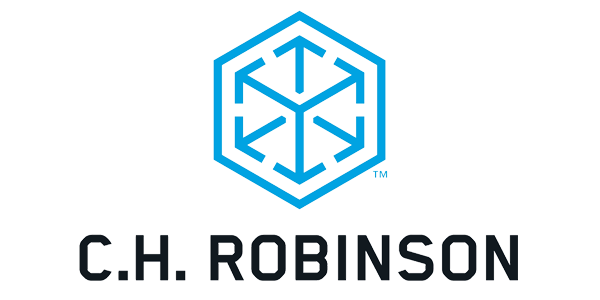What’s Your Plan if There’s a West Coast Port Strike?
The International Longshore and Warehouse Union (ILWU) and Pacific Maritime Association (PMA) began contract talks on May 12, with lots of contentious issues on the agenda.
Supply chains can face disruption from man-made events, as well as natural disasters.
Case in point: the International Longshore and Warehouse Union (ILWU) and Pacific Maritime Association (PMA) began contract talks on May 12, with lots of contentious issues on the agenda.
When the current contract expires on June 30, will they have a deal? Or, will we see a repeat of 2002, when a 10-day lockout left dozens of ships lined up outside the West Coast docks, unable to unload?
The U.S. West Coast (USWC) ports received 9.6M TEUs in 2013—about 40.9% of all U.S. imports. Given the sheer volumes that would have to be diverted if a port strike occurs, contingency plans using subsequent ports could also face constraints in berthing windows, congestion, rail car shortages, and chassis constraints as more congestion and delays occur.
Still, although nothing is certain at this time, if you ship goods to the West Coast ports, you can consider your options:
1. You could leave current routings the way they are. Carriers are likely to be hesitant about rerouting vessels anyway unless they believe the port strike will be overly prolonged.
2. Consider moving critical products via air freight and/or using a sea-air option to minimize the impact of increased costs.
3. Think about advancing critical purchase orders so product arrives at destinations in a timely manner before June 30 (the end of the ILWU contract). Communicate with the destination distribution centers and warehouses to ensure they have the ability to plan and receive the additional inventory.
4. Choose alternate port routings:
- The Canadian gateway at USEC Halifax or Montreal. While this is an option, Halifax only utilizes the Canadian National Railway (CN), with limited capacity. Montreal uses both the CN and Canadian Pacific Railroad (CP) and is a better, more viable option for Inland Port Intermodal (IPI) cargo. However, Montreal’s low water tides can also cause barriers to accepting larger vessels, which makes planning for carriers extremely complicated. Surplus in volumes can also cause additional customs exams and congestion at border crossings.
- USWC Vancouver or Prince Rupert. Prince Rupert is a viable IPI gateway but is only serviced with the CN, so capacity will be tight and stack trains will be limited. Additionally, there is no transload facility at this location. Vancouver is an option, but the current congestion has caused a tremendous backlog of 1 to 2 weeks.
- USEC & Gulf gateway. While this is an option for most carriers through Panama and Suez, it is a great concern that the International Longshoremen’s Association will specifically not work vessels that were designed to unload at the USWC, given the “brotherhood” that exists between them and the ILWU. There is also a good possibility that carriers might discharge cargo at the main transship points of Panama, Cartagena, and Colon and declare force majeure. Customers will need to handle the incremental cost to move the containers from these locations to the final destinations if force majeure is declared.
- Mexican gateway at Ensenada, Manzanillo, or Lazaro Cardenas. These are small ports designed to handle small allocations. Of the three locations, only Lazaro Cardenas has inland rail options which are, by design, extremely limited to U.S. inland points.
5. Transload, truck, and intermodal. Be prepared to consider multiple means of transportation, utilizing truck and intermodal as needed to keep products moving. This would apply to all ports; therefore necessary border crossing formalities will need to be done accordingly. This would also be a primary option for expedited delivery if vessels drop anchor and call the ports once a potential port strike is over.
While all of the above are possible options, there is no real contingency plan that will fix what could possibly happen. It’s also important to note that in the event of a port strike, the President of the United States could invoke the Taft-Hartley Act if he deems that a strike would be potentially harmful for the well-being of the country and economy. In that case, striking workers would be forced back to work.
Source: C.H. Robinson Blog













